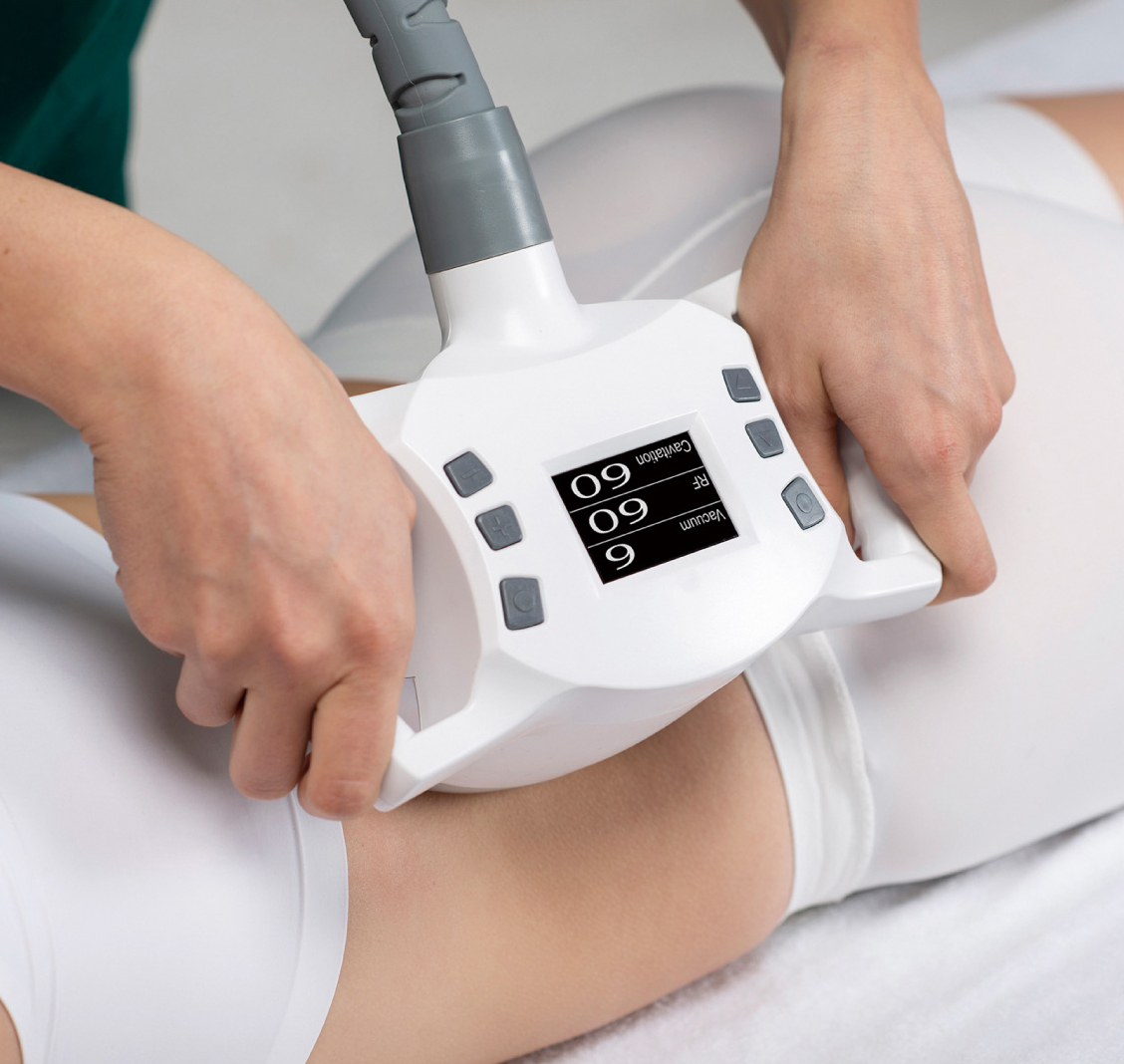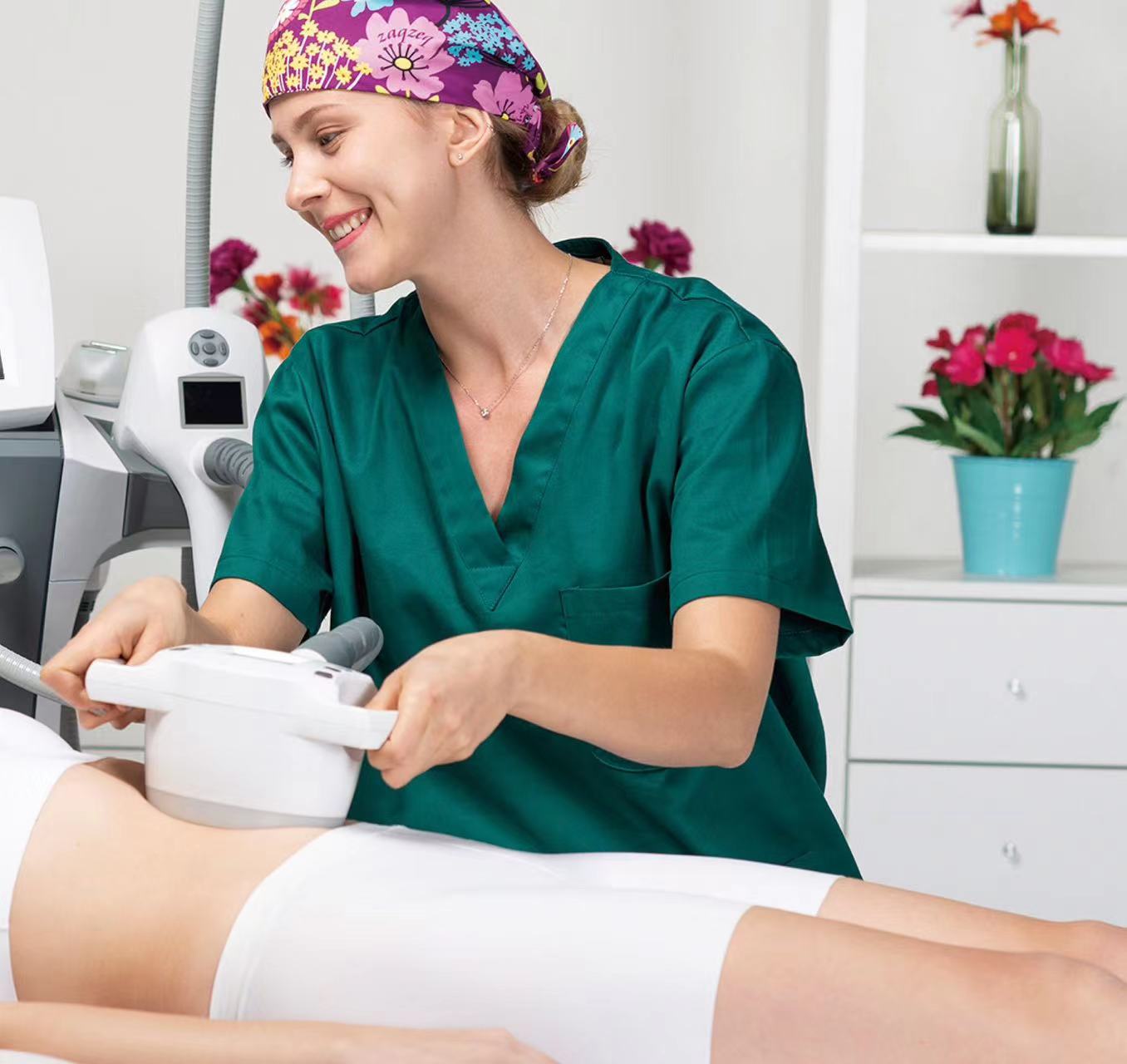Exploring Cryolipolysis How This Technology Revolutionized Fat Reduction
Understanding Cryolipolysis
Definition and Concept
Cryolipolysis, often referred to as “fat freezing,” is a non-invasive cosmetic procedure that aims to reduce localized fat deposits in the body. This technique employs controlled cooling to target and eliminate fat cells without damaging surrounding tissues or skin. Cryolipolysis has become a popular alternative to more invasive procedures like liposuction, thanks to its relatively painless process and minimal recovery time.

Historical Background
The concept of Cryolipolysis can be traced back to observations made by scientists regarding the effects of cold on fat cells. In the early 2000s, researchers at Harvard University noticed that children who ate a lot of popsicles developed dimples in their cheeks due to the loss of fat cells. This phenomenon, known as “popsicle panniculitis,” laid the groundwork for further scientific investigation into the potential of cold to selectively reduce fat.
Scientific Principles
The scientific foundation of Cryolipolysis relies on the fact that fat cells are more susceptible to cold temperatures than other types of cells. During the procedure, a device applies precisely controlled cooling to the targeted fat area, crystallizing the fat cells and causing them to undergo apoptosis or natural cell death. Over a period ranging from several weeks to a few months, the body’s immune system naturally processes and eliminates the dead fat cells, resulting in a noticeable reduction in the treated area.
Cryolipolysis: From Lab to Beauty Salon
Initial Research in Laboratories
Early Studies and Trials
Cryolipolysis began its journey in laboratory settings where researchers conducted robust studies to validate its efficacy and safety. Initial experiments on animal models demonstrated the selective destruction of fat cells upon exposure to cold. Subsequently, clinical trials on human subjects were carried out, revealing promising results with minimal adverse effects. These early studies provided the empirical foundation necessary to progress from the laboratory to clinical applications.
Key Discoveries and Milestones
Several key milestones have marked the evolution of Cryolipolysis. The first significant breakthrough was the identification of the precise temperature range required to induce fat cell apoptosis without harming the surrounding tissues. Another pivotal discovery was the realization that multiple treatment sessions could enhance fat loss results. These findings, coupled with advancements in cooling technology, paved the way for the development of effective and safe Cryolipolysis machines.
Evolution of Cryolipolysis Machines
Technical Advancements
Cryolipolysis machines have undergone significant technical advancements since their inception. Early devices were relatively basic, primarily focusing on delivering controlled cooling to targeted areas. However, modern machines now feature sophisticated sensors and cooling mechanisms that ensure precise temperature control and uniform fat reduction. Innovations such as vacuum-assisted applicators and real-time monitoring systems have further improved the efficacy and safety profile of these devices, making them more user-friendly for both practitioners and patients.
Safety Measures and Regulations
Ensuring patient safety has always been a paramount concern in the development of Cryolipolysis machines. As the technology advanced, stringent safety measures and regulations were introduced. These include built-in sensors to monitor skin temperature, automatic shut-off features in case of irregularities, and standardized protocols for treatment duration and cooling intensity. Regulatory bodies like the FDA have approved various Cryolipolysis devices, further endorsing their safety and efficacy for clinical use.
Clinical Applications in Dermatology
Approved Uses for Fat Reduction
Cryolipolysis is primarily approved for reducing fat deposits in specific body areas such as the abdomen, thighs, buttocks, and flanks. Dermatologists and aesthetic practitioners utilize this technique to sculpt and contour the body by targeting stubborn fat pockets resistant to diet and exercise. Cryolipolysis has also gained approval for use under the chin, offering a non-surgical solution for double chin reduction.
Comparative Analysis with Other Technologies
Compared to other fat reduction technologies like liposuction, ultrasonic cavitation, and laser lipolysis, Cryolipolysis presents several advantages. It is non-invasive, requires no anesthesia, and has minimal downtime, allowing patients to resume their daily activities almost immediately. Although it may take longer to see results compared to surgical methods, the risk of complications is significantly lower. Additionally, the gradual fat reduction process associated with Cryolipolysis provides a more natural-looking outcome, making it a preferred choice for many individuals.
Cryolipolysis is now widely used in the beauty industry. Since its inception in 2003, Anchorfree has focused on the manufacturing of aesthetic and medical aesthetic devices based on laser, light-based, RF, vacuum, ultrasound, and EMS technologies. We are committed to developing and delivering high quality products with cutting-edge technology to our global partners and customers.
Benefits and Efficacy of Cryolipolysis Treatments
Mechanism of Action on Fat Cells
The mechanism of action in Cryolipolysis is based on exposing fat cells to cold temperatures, which induces apoptosis or programmed cell death. As fat cells freeze, their lipid content crystallizes, leading to cell death without causing damage to nearby tissues like the skin or muscles. Over the following weeks to months, the body’s natural biological processes remove these dead cells, reducing subcutaneous fat in the treated areas. This targeted approach makes Cryolipolysis a compelling option for those seeking to reduce localized fat deposits.
Patient Experience and Results
Typical Treatment Process
A typical Cryolipolysis treatment begins with the practitioner placing a protective gel pad over the target area. Next, the Cryolipolysis machine applicator is applied, which uses suction to draw the fatty area into cooling panels. Patients often feel an intense cold sensation initially, followed by numbness in the treated area. The session usually lasts between 35 to 60 minutes per area, and multiple sessions may be required depending on the severity of the fat deposits and the desired outcome.
Expected Outcomes and Side Effects
Patients can expect noticeable fat reduction in the treated areas after several weeks, with optimal results usually visible after two to three months. Common side effects include temporary redness, swelling, and bruising in the treated area, which generally resolve on their own within a few days to weeks. More serious side effects are rare but can include prolonged numbness or sensation changes. Overall, Cryolipolysis is well-tolerated and offers a convenient, non-invasive method for fat reduction.
Long-term Efficacy
The long-term efficacy of Cryolipolysis has been supported by several clinical studies and patient testimonials. Fat cells eliminated through Cryolipolysis do not regenerate, ensuring a lasting reduction of fat in the treated areas, provided the patient maintains a stable weight. While Cryolipolysis is effective for fat removal, it is not a weight-loss solution and should be complemented with a healthy lifestyle to achieve and maintain optimal results.
Popularity and Adoption in Beauty Salons

Growing Demand Among Consumers
Cryolipolysis has seen a surge in demand in the beauty and cosmetic industry due to its non-invasive nature and effective results. The global market for non-invasive fat reduction treatments has grown exponentially, with Cryolipolysis leading the way. Social media platforms and word-of-mouth recommendations have further fueled its popularity among consumers seeking convenient and effective body contouring solutions.
Market Trends and Statistics
The market trends indicate a growing inclination towards non-surgical cosmetic treatments. Surveys show that a significant percentage of individuals considering fat reduction prefer non-invasive techniques like Cryolipolysis over surgical options. The increasing availability of Cryolipolysis machines in beauty salons worldwide underscores the technology’s widespread acceptance and growing market share.
Influences on Popularity
Several factors contribute to the rising popularity of Cryolipolysis. The busy lifestyles of modern consumers necessitate procedures that require minimal downtime, making non-invasive treatments like Cryolipolysis highly appealing. Additionally, advancements in technology have improved treatment comfort and efficacy, enhancing patient satisfaction and driving increased adoption. The visible, consistent results achieved through Cryolipolysis have further solidified its reputation as a reliable fat reduction method.
Training Requirements for Practitioners
Certification and Education Programs
The growing adoption of Cryolipolysis in beauty salons has heightened the need for comprehensive training and certification programs for practitioners. Dedicated courses provide in-depth knowledge of Cryolipolysis principles, machine operation, safety protocols, and patient management. Certification ensures practitioners can deliver safe and effective treatments, adhering to industry standards and regulations. Proper training not only ensures optimal patient outcomes but also builds consumer trust in the service provided.
Through many years of operation, Anchorfree has formed an experienced and talented research and development teams. We will be continuously focused to develop the products with strong technical advantages and seek independent innovation and provide a high-class services for our partners and customers around the world.
Future of Cryolipolysis Technology
Emerging Trends and Innovations
The future of Cryolipolysis technology looks promising, with ongoing research and development paving the way for innovative advancements. Emerging trends include the integration of artificial intelligence and machine learning to enhance treatment precision and outcomes. Innovations such as multi-functional applicators, capable of treating multiple areas simultaneously, are also being developed. These advancements aim to reduce treatment time, increase patient comfort, and further improve efficacy.
Potential Expansions in Medical Fields
Beyond cosmetic applications, Cryolipolysis holds potential for expansion into various medical fields. Ongoing research is exploring its use in treating conditions like lipomas (benign fatty tumors) and certain metabolic disorders related to fat tissue. The technology’s non-invasive nature and targeted fat reduction capabilities could make it a valuable tool in broader medical contexts, offering new treatment avenues for patients with specific medical needs. Such expansions would further cement Cryolipolysis’s position as a versatile and impactful technology in both cosmetic and medical domains.
In conclusion, Cryolipolysis has evolved remarkably from its early experimental stages to becoming a widely accepted cosmetic procedure in dermatology. The scientific principles underpinning this technology, coupled with continuous advancements in machine design and safety protocols, have contributed to its effectiveness and popularity. As research continues and technology advances, Cryolipolysis is poised to remain at the forefront of non-invasive fat reduction techniques, offering a viable alternative to traditional methods.







